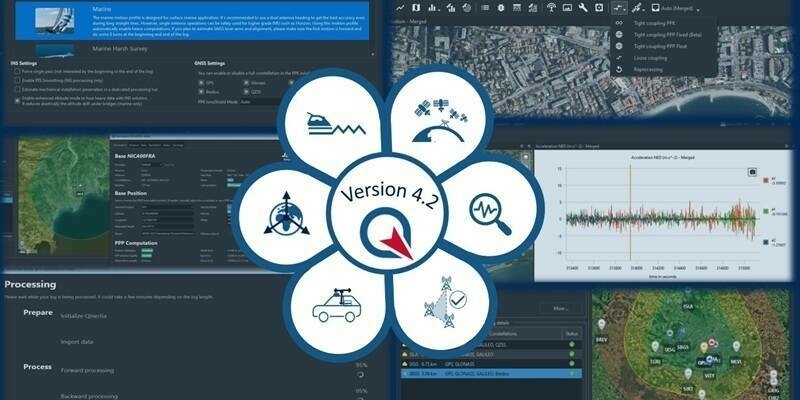Redlands, California—June 27, 2016—Getting a more intelligent picture of our planet just got easier thanks to an explosion in new imagery data collection sources, like drones and microsatellites, coupled with new image processing and analysis capabilities in Esri technology.
This next generation of imagery intelligence comes alive in The ArcGIS ImageryBook: New View. New Vision., published today by Esri.The book, available in print or via an interactive PDF, together with an interactive companion website, will give readers foundational knowledge about how imagery and remote sensing can be used with geographic information system (GIS) technology. Readers also will get hands-on experience in working with imagery and remote-sensing data in ArcGIS, Esri's GIS platform.
The book's editors, Clint Brown, Esri director of software products, and Christian Harder, Esri senior editor and writer, said they hope the book will help turn readers into "GIS and imagery aces."
The ArcGIS Imagery Book is the second in a series of books from Esri (The ArcGIS Book was the first) that provides an interactive learning experience online. "It comes with intelligent information items: maps, web scenes, analytic models, story maps—just amazing rich content," said Brown. "We get into real-world problem solving and real-world applications."
The book offers a look back at the fascinating history and rapid evolution of earth observation technology. Readers will see, for example, a panorama photograph, taken from a kite in 1906, of earthquake damage in San Francisco, California; learn about the military's use of aerial photography for reconnaissance during World War I, World War II, and the Cold War; and view imagery, taken from spacecraft, of the earth, other planets, and moons. They will also learn about modern earth imaging technologies and how imagery data can be used in a GIS for applications such as precision agriculture, forestry, mining, humanitarian aid, urban planning, natural disaster assessment, and climate and weather studies.
Readers will learn about new capabilities in Esri ArcGIS, including ArcGIS Pro and Drone2Map for ArcGIS, for quickly processing, visualizing, analyzing, managing, and sharing imagery. And they will get a bird's-eye view of how the technology works as they download the software via the companion website or the interactive PDF edition and begin to explore and study imagery and take lessons in how to work with imagery content within ArcGIS.
"GIS is changing and in some really big ways," Brown said. "For a long time, imagery and GIS were thought to be separate. They were separate, really, not because they weren't both geospatial technologies. It's just that the computing environments in which they ran weren't capable of supporting both imagery and GIS."
Brown said he's excited to publish the book to show everyone—from students to GIS professionals to "armchair" geographers—what can be accomplished today thanks to advances in ArcGIS, imagery and remote sensing, and cloud computing.
"ArcGIS has become a full, completely functional image processing system, in addition to being a GIS," Brown said. "The other big trend that is happening is just massive sensing of the planet. Everybody is a sensor now with their phones, but there are a lot of satellites and drones. There are all kinds of data being collected and placed into this GIS of the world. Access to this broad set of information has never been possible before, and now it is."
The ArcGIS Imagery Book and companion website—with 200 links to maps and other materials—includes the following resources:
- Maps and apps to visualize and study imagery
- Learn ArcGIS lessons on topics such as imagery interpretation and analysis in ArcGIS in 3D and 4D, display Landsat data in ArcGIS Pro, and create GIS data from drones using Drone2Map for ArcGIS
- Videos about GIS and imagery
- Articles about the history of imagery
- Thought leadership pieces about ArcGIS and imagery written by industry leaders such as Esri president Jack Dangermond; remote-sensing pioneer Kass Green; Kathryn D. Sullivan, the administrator of the National Oceanic and Atmospheric Administration (NOAA); satellite architect Sarah Parcak; and Pascal Mueller, director of the Esri R&D Center in Zurich, Switzerland
"The design goal of the new imagery book and the original The ArcGIS Book was to present a treasure trove of real-world applied GIS applications and examples, paired with hands-on lessons that get readers quickly making cool maps with real data," said Harder. "With The ArcGIS Imagery Book, in particular, we think that many existing ArcGIS users will be delighted with the rich opportunities offered by imagery data."
Subscribe to our newsletter
Stay updated on the latest technology, innovation product arrivals and exciting offers to your inbox.
Newsletter

